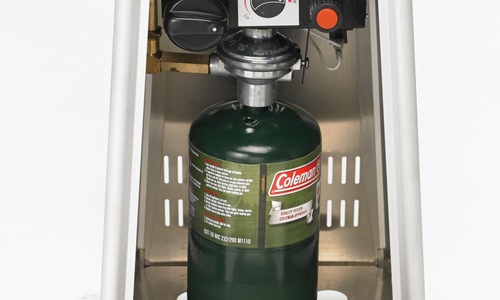5-minute read
|
Heating your home efficiently is crucial, especially in regions with harsh winters. Electric heaters are often seen as a cost-effective and easy-to-install solution since they don’t require any special ventilation like gas heaters do. On the other hand, gas heaters tend to be more economical to operate because natural gas is typically cheaper than electricity. They’re also better suited for warming larger spaces effectively. Both options are widely used across the globe, making them viable choices depending on your needs and circumstances.
Electric heaters come in two main varieties:
Radiant heaters – These heaters use a heating element encased in a glass envelope to generate infrared radiation. The heat is reflected outward by a metal plate, traveling through the air until it reaches objects or people. Radiant heaters, or infrared heaters, excel at spot heating. For instance, you can find examples of these heaters here.
Convection heaters – These heaters warm the surrounding air via convection. As the air near the heater heats up, it rises, creating a vacuum that pulls in cooler air to be warmed. This cycle repeats, providing consistent warmth. Convection heaters are ideal for enclosed spaces and include models like ceramic heaters and oil-filled heaters.
Gas heaters fall into two primary categories:
Flued heaters – These heaters are permanent installations that require professional setup at the correct height to ensure all exhaust gases are properly vented out. Non-flued heaters – Also known as vent-free or flueless heaters, these units can be used indoors provided there’s adequate ventilation.
A gas heater or furnace demands ventilation to expel the fumes created during combustion. This usually involves setting up air ducts and vents throughout the house, which can be complex and costly. Professional assistance is almost always necessary for this kind of setup. Electric heaters, however, are portable and don’t need such extensive installations. Wall-mounted electric heaters still require installation, but the process is simpler and often doesn’t necessitate professional help.
The upfront cost of installing a gas heater is significantly higher than that of electric heaters due to the need for a central furnace and flue outlets. Electric heaters are generally more budget-friendly to install.
Gas heaters produce more heat than electric ones, and since gas tends to be cheaper than electricity, gas heaters usually have lower ongoing operational costs. Electric space heaters are most economical when used to heat smaller areas at low temperatures.
Infrared heaters emit radiant heat and should be placed carefully to avoid potential fire risks. Most gas heaters require proper ventilation and must be switched off before sleeping to prevent carbon monoxide buildup.
Note: Heating systems reduce indoor humidity, which might worsen conditions like dry skin or eczema. Using a humidifier can help maintain optimal moisture levels.
The preference between gas and electric heating depends largely on geographical location. In colder climates like the northeastern United States, gas heating dominates due to its efficiency in handling extreme cold. In warmer regions, electric heating might be favored since less intense heating is needed.
If you're considering purchasing a personal heating unit, radiant heaters are a strong recommendation. Gas heaters operate slower but are excellent for delivering sustained warmth over extended periods and across wider areas. Radiant heaters suit personal or room-specific applications because they focus heat directly onto individuals and objects, providing rapid warmth.
Despite some limitations, both convection and radiant heating perform better in portable units compared to large-scale home systems. Centralized convection furnaces and radiant panels heat expansive areas but at a greater expense. Personal space heaters consume less energy to warm smaller spaces, offering long-term savings.
Gas heating is better suited for larger households because it heats spaces quicker than electric alternatives. Electric heating might be the sole option if there isn't access to a chimney or similar outlet for venting.
Have questions or need more details? We’d love to assist! Feel free to reach out to us anytime. Magnetic locks, also known as electromagnetic locks, are mostly used for iron doors and wooden doors. They are a kind of electric locks that are frequently used in access control systems. They are widely used in schools, enterprises, and units, and provide protection for people's safety.
The magnetic lock is stable in performance, safe and reliable, and has few failures. Its installation is very convenient. It is different from the electric bolt lock and requires digging holes. It only needs to run the wire slot, and finally tighten the screws with screws to complete the installation. In addition, the electromagnetic lock is very power-saving, and will automatically unlock in the event of a power failure, which meets the fire protection requirements.
Electromagnetic Lock,Electromagnetic Locks For Cabinets,Electric Control Lock For Logistics Cabinet,Keyless Hidden Electric Control Lock Dongguan Kaisijin Intelligent Technology Co., Ltd , https://www.oemsmartlock.comGas vs. Electric Heating: Which One Should You Choose?

HVAC Systems and Home Heating
Types of Gas Heaters
Installation
Cost
Operating Cost
Safety Hazards
Popularity
Gas vs. Electric Heaters
Suitability
Gas vs. Electric Heating
```html
```
Go Back To Blog